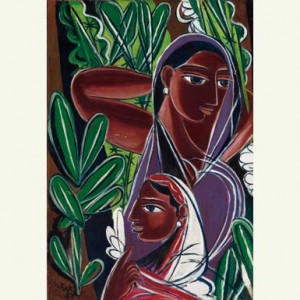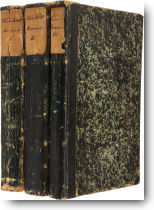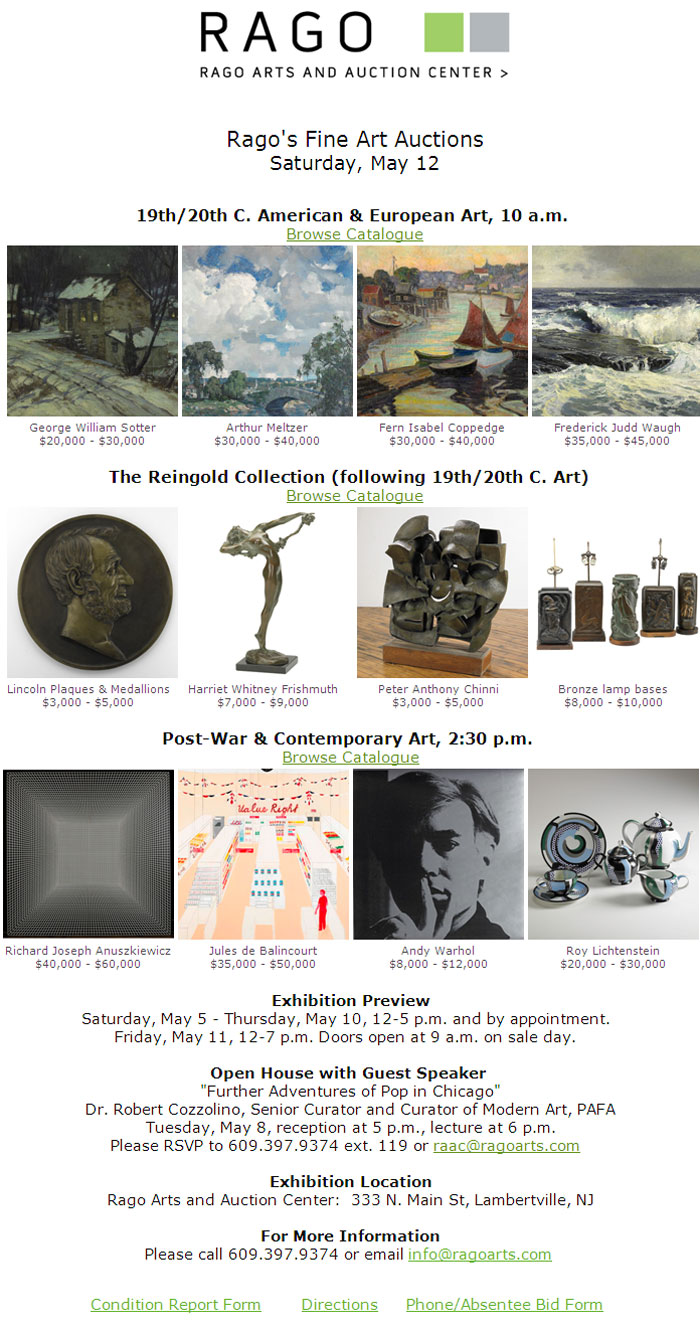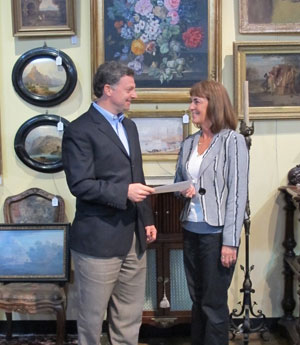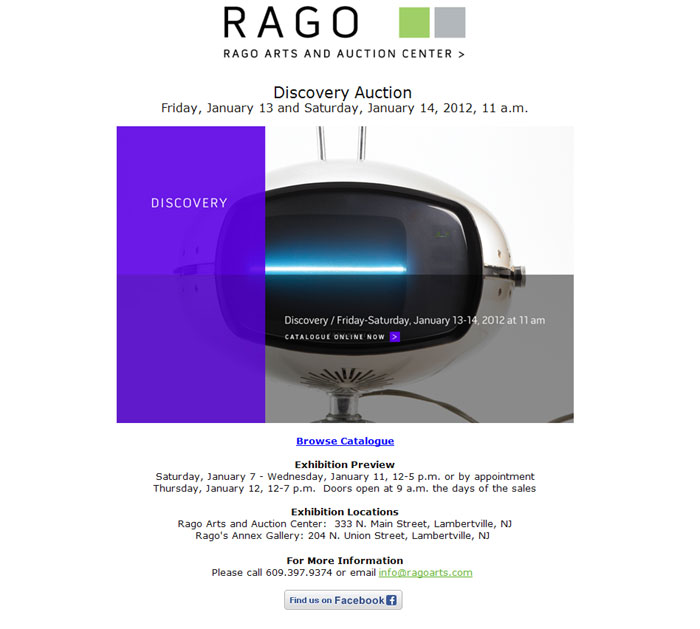400-lot collection includes Asian treasures retained by same family for 100+ years
PALMETTO, Fla. – Only rarely does a collection come to the auction marketplace that can match for quality and provenance the one Manatee Galleries is offering on July 27th. The Ambassador Ragnar Petri and Mrs. Ingrid Burdin Petri collection of European and Asian fine and decorative art is a testament to the connoisseurship of two world travelers driven by a passion for beauty and cultural history.
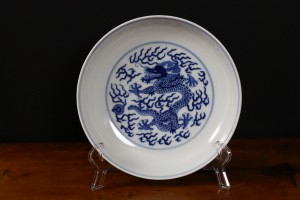
Chinese Guangxu blue and white dish, 7¼in dia., with underglaze blue six-character mark and of the period (1875-1908), featuring curled dragon and flaming pearl amongst thunderbolts. Est. $2,000-$3,000. Manatee Galleries image.
“Ambassador and Mrs. Petri are both originally from Sweden and now retired in Florida. Ragnar Petri served as Swedish ambassador and consulate to many nations, including Japan, Ecuador, Germany, Spain and Colombia,” explained Adrienne Falconer, president of Manatee Galleries. “Ingrid Petri was born into a family of collectors. Her father was Gylfe Burdin, a prosperous Stockholm businessman and art aficionado who acquired only the finest antique Asian porcelain, which Ingrid eventually inherited.”
Over a period of 65 years, the Petris have formed an exceptional collection that blends the Gylfe Burdin collection with antiques judiciously purchased during their years of diplomatic travels. The collection has remained solely in the Petris’ hands, and they have never before offered it for sale. Everything in the July 27 auction is fresh to the market, and most of the Chinese pieces – which have provenance from the Burdin collection – have been kept within the same family by direct descent for over a century.
Manatee Galleries has opted to place conservative estimates on all pieces. The Petris’ favorite Chinese work is a rare Chongzheng (1628-1643) transitional “Wucai boys” covered jar. The 11½-inch vessel is richly painted with a depiction of genteel ladies seated in a garden, watching boisterous young boys at play. A similar jar sold for HK$275,000 at Christie’s May 2012 sale in Hong Kong. It is entered in Manatee’s sale with a $3,000-$5,000 estimate.
An important famille verte covered jar, 18th/19th century, has a Chinese signature on the side of the jar and an underglaze blue double-circle mark, possibly of the Kangxi Period 1662-1722). Its motif depicts a robed dignitary holding a bolt of silk, followed by a servant with a large hand fan. Standing 8 inches tall, it is expected to make $1,000-$5,000.
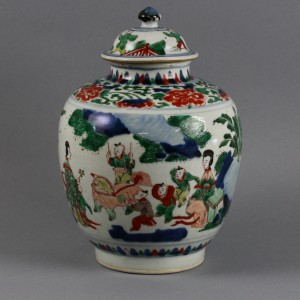
Chinese Chongzheng (1628-1643) transitional “Wucai boys” covered jar, 11½in, similar to an example that sold for HK$275,000 at Christie’s May 2012 sale in Hong Kong. Est. $3,000-$5,000. Manatee Galleries image.
Another famille verte highlight is the brightly enameled 17th-century Kangxi Period Chinese plate, 9¼ inches (dia.), with an image of two elegant ladies in a verdant pavilion garden. The wonderfully decorative border features four cartouches with colorful winged insects. A similar example sold for $17,276 at Christie’s South Kensington’s Sept. 19, 2012 Interiors sale. The plate from the Petri collection carries a $2,000-$5,000 estimate.
Manatee Galleries’ catalog describes a rare and important 17th-century Chinese verte covered box as having “the finest-quality painting [we] have seen on a piece that is well over 300 years old.” Its lid is vibrantly filled with the image of two boys – possibly twins – bound together at the waist but running in opposite directions. The 4.1-inch diameter box retains a 1950s label from the Amsterdam gallery “Kunstzalen A. Vecht” and is estimated at $3,000-$5,000.
An eye-filling early 17th-century Ming Zhangzhou (Swatow) polychrome basin has steep flaring sides and is generously decorated in iron-red, green, turquoise and black enamels. Its central image is of a bird in full flight amongst peony blooms, and the medallions at each quarter turn bear Chinese marks. On verso, there are old collectors’ labels and a six-character Chinese mark. With no chips, cracks or repairs, the 15½in-diameter basin is entered in the sale with a $1,000-$5,000 estimate.
Yet another premier lot is a Chinese Guangxu blue and white dish with underglaze blue six-character mark, and of the period 1875-1908, featuring a central motif of a curled dragon and flaming pearl amongst thunderbolts. The 7¼-inch dish is estimated at $2,000-$3,000.
A showcase for Chinese artistry at its most appealing, an antique huanghuali wood screen is embellished with jade and hardstone on its panels, each with a lively scene of activities within an imperial or noble court. The multicolored screen measures 72 inches by 72 inches and is estimated at $4,000-$5,000.
Of the Asian scrolls to be auctioned, the most significant is a signed Kanou Motonobu (Japanese, 1476-1559) metallic scroll painting that measures 49 inches long by 19½ inches wide. Centered with an ethereal depiction of three horses standing in water – one of them leaning down to drink – the painting is of particular importance because it was created by the eldest son of Kano Motonobu, founder of the famous Japanese school of painting.
“The Kano family is one of the most important lineages in Japanese history,” said Adrienne Falconer. “They dominated the painting world from the end of the Muromachi Period (1333-1568) to the end of the Edo Period (1600-1868).”
The Motonobu Kanou scroll painting exhibits a technique known as wa-kan, a hybrid of Japanese and Chinese painting that requires careful brushwork techniques. The scroll is estimated at $3,000-$5,000.
The Petri collection also includes an outstanding selection of English Staffordshire, silhouettes and miniature paintings; and even some mid-century modern design. The star of the European antiques section, however, is a 19th-century “blue john,” white marble and slate urn on pedestal that has been electrified to function as a lamp. Blue john, which was discovered by the Ancient Romans nearly 2,000 years ago, is a rare natural variety of calcium fluorite known as “radix amethysti” for its distinctively colored deep purple veins. The only known deposit of this unusual mineral – also known as Derbyshire spar – was found in the hills of Derbyshire’s Hope Valley in England. Highly prized blue john was a favorite mineral of Birmingham silversmith and ormolu manufacturer Matthew Boulton, who used it in the production of candelabra, urns, candlesticks and other decorative and functional pieces.
The blue john mines and seams are now largely exhausted, making the urn/lamp in the Petri collection all the more valuable. Its auction estimate is $3,000-$5,000.
Manatee Galleries’ auction of the Ambassador Ragnar Petri and Mrs. Ingrid Burdin Petri collection will take place on July 27, 2013, starting at 4 p.m. Eastern time. Preview July 24-26 from 11 a.m. to 5 p.m., on July 27 (auction day) from 11 a.m. to 4 p.m., or by appointment. The gallery is located at 1007 10th Avenue West in Palmetto, Florida 34221. All forms of bidding will be available, including absentee, phone and live via the Internet through LiveAuctioneers.com, Artfact.com and the-saleroom.com. The online catalog may be viewed online at any of these three websites.
For additional information on any item in the auction, to leave an absentee bid or to book a phone line, call 941-722-4800 or email info@manateegalleries.com. Visit Manatee Galleries online at www.manateegalleries.com.

